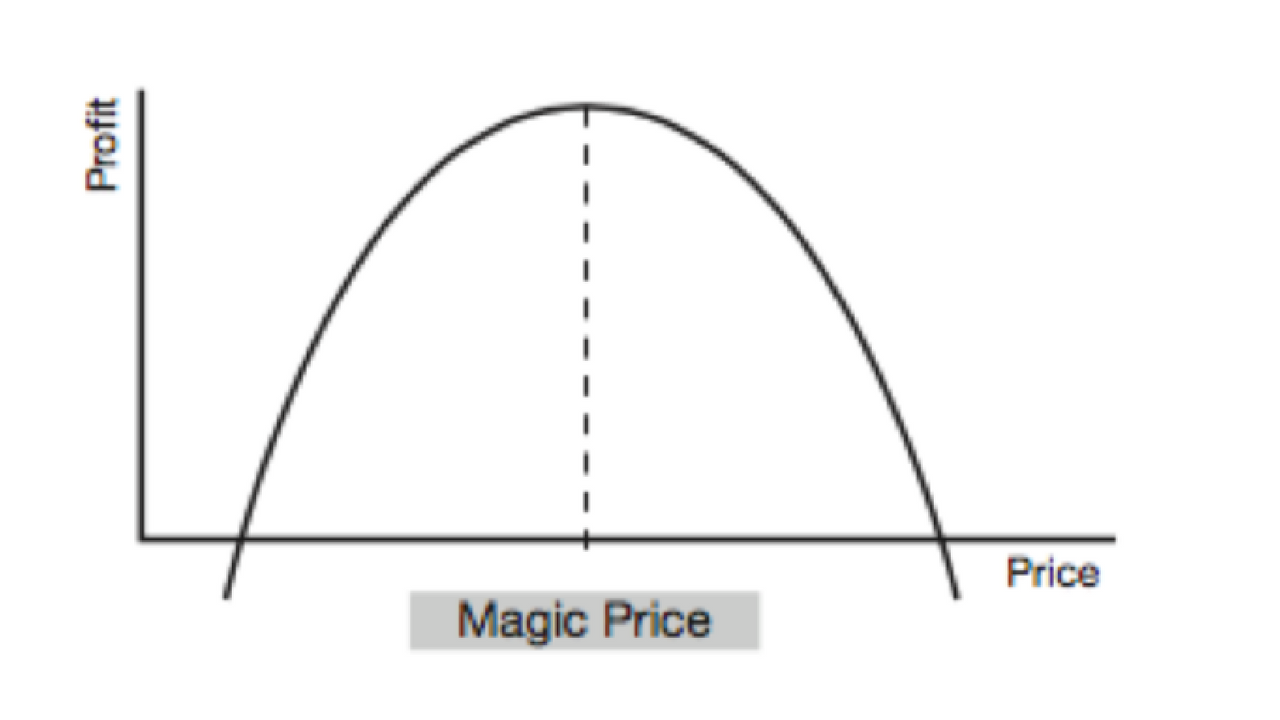
How To Find Your Magic Price
Oct 31, 2016Taking the law of supply and demand to the next level
So what is a magic price?
Essentially, it's the price that maximises your profit.
The law of supply and demand
When I started to study economics, even at school one of the very first things we learned was the law of supply and demand. That the point at which the supply curve and the demand curve intersect is the equilibrium – or ideal – price. The trouble is that while that works in theory, in practice it's difficult to measure.
If we could, if we knew, for example, exactly how many tax returns people would buy at £200 or £300, we could easily plot a demand curve. And then, if we worked out the profit for each price point, we’d end up with a bell-shaped chart. One that basically shows that a zero price – giving your stuff away for free, while still having to cover all of your costs – means you’d be making a loss.

Similarly, at the other end of the scale, if you price too high nobody will buy – and you’d still be left with the costs of running your business. So, that means that somewhere in between is your magic price.
You can learn more about finding your magic price by watching my latest video here.
The power of finding your magic price
Although in theory there are various approaches to finding your magic price, in practice the only way is by testing, testing, and more testing. To encourage you, I’d like to illustrate the power of finding your own magic price. And to do this, I first want you to imagine a service that you offer. A basic tax-return preparation service, for example. Next, imagine that the cost to you is £50. Of three potential clients, client A is willing to pay £200, client B £150 and client C £100. So, which price do you set?
To find out, let’s do the math: If you charge £100 pounds, all three customers will buy. If your cost is £50, that means you make a profit of £50 pounds for each, or £150 in total.
What if though, you set the price at £150? At £150, customer C won’t buy but, again, do the math: Customer C doesn't buy, but you now make £100 profit from customers A and B, making your total profit £200.
And if you charge £200? Now customer B won’t buy either, so you make one sale of £200, less costs, giving you a profit of £150. In this particular case then, the magic price is £150.
Taking things to the next level…
As I said above, the best way to find your magic price is by repeated testing. But – and here's the really key point – the problem is that different customers value things differently.
So now imagine you could figure out a way to charge customer A the £200, customer B the £150, and customer C the £100 that they’re willing to pay. That really would take things to another level.
If you found this valuable and would like to learn more about value pricing, I run a free live online training session every month with a topic chosen by you. Attend live and you can ask me any questions you have. Click here to register and I will send you an invitation to the next session.
Wishing you every success on your pricing journey
Mark Wickersham
Chartered Accountant, Public Speaker and Author of Amazon No.1 Best Seller “Effective Pricing for Accountants”

